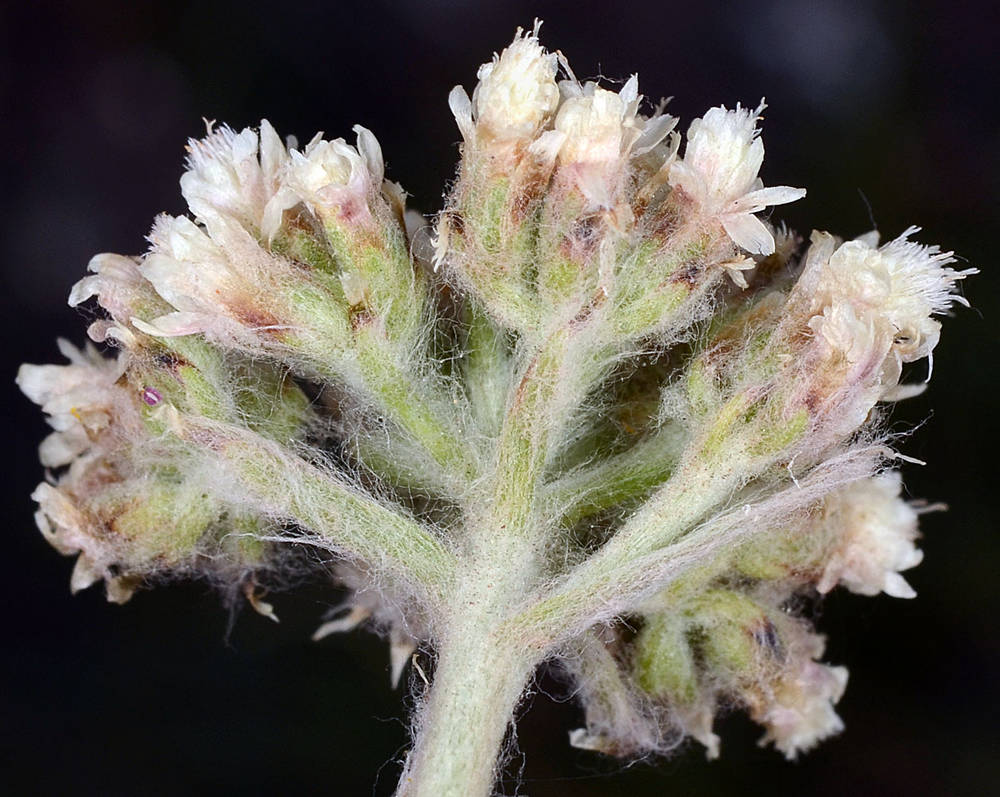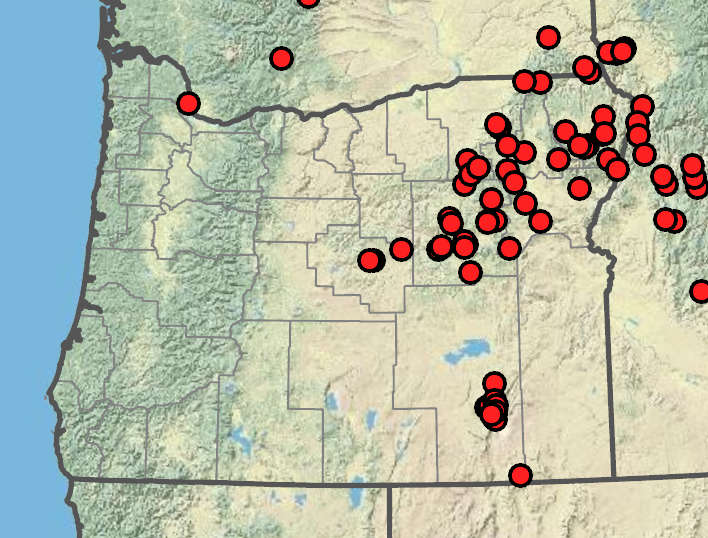Antennaria parlinii
Antennaria anaphaloides
pearly pussytoes, tall pussytoes
15–35(50) cm, sometimes glandular.
not rosette-like, narrowly oblanceolate to narrowly elliptic, 25–150(200) × 4–20(25) mm, 3–5-veined;
tips mucronate;
surfaces gray-pubescent.
oblanceolate to linear, 10–80 mm;
tips acute to acuminate, usually flagged.
densely tomentose proximally, staminate heads (4)5–6.5 mm, pistillate heads 4.5–7 mm.
with dark brown spot or band near base of scarious portion, distally white or cream, sometimes pink to red;
tips acute to acuminate.
1–1.8 mm, glabrous.
8–30(50+) per stem; in corymb-like arrays.
=28.
Antennaria parlinii
Antennaria anaphaloides
Meadows, openings in shrublands or forests. Flowering May–Jul. 900–2800 m. BR, BW, Lava. NV, ID, WA; north to British Columbia, northeast to Saskatchewan, east to WY, southeast to CO. Native.
Katie Mitchell, Stephen Meyers
- Local floras:
BC,
OR,
WA
- Local Web sites:
Flora NW,
PNW Herbaria
WildflowerSearch
iNaturalist (observations)
USDA Plants Database
- LBJ Wildflower Center
- SEINet
- Plants of the World Online
- Encyclopedia of Life
- Wikipedia
- Google Image Search



